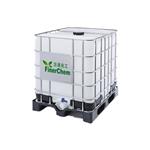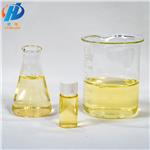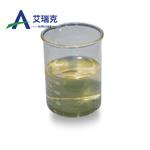trans-Cinnamaldehyde: A Natural Compound with Potentiating Effects in Bacteria and Fungi
Feb 5,2024
General Description
In summary, trans-Cinnamaldehyde is a natural compound derived from cinnamon bark and other plant sources. It possesses potentiating effects in Gram-positive bacteria, such as Listeria monocytogenes and Staphylococcus aureus, including methicillin-resistant strains. It has been found to synergize with bacteriocin nisin and conventional antibiotics, significantly reducing their MIC values. Additionally, trans-Cinnamaldehyde has shown potential in combating fungal infections. It synergizes with antifungal drugs, particularly azoles, against fungi like Aspergillus fumigatus and Trichophyton rubrum. These findings suggest that trans-Cinnamaldehyde could be a promising candidate for developing new therapeutic strategies against antibiotic-resistant bacterial infections and enhancing the efficacy of antifungal treatments.

Figure 1. trans-Cinnamaldehyde
Origin
trans-Cinnamaldehyde is a natural compound that is primarily derived from cinnamon bark. Cinnamon, scientifically known as Cinnamomum verum or Cinnamomum cassia, is an aromatic spice obtained from the inner bark of certain tree species belonging to the Cinnamomum genus. The process of obtaining trans-cinnamaldehyde involves harvesting the bark from these trees and then drying and processing it. Once the bark is collected, it undergoes a distillation process to extract the essential oil present within. This essential oil contains various compounds, including trans-cinnamaldehyde, which gives cinnamon its characteristic flavor and aroma. It is worth noting that trans-cinnamaldehyde is responsible for the distinct spicy and warm taste associated with cinnamon. Apart from cinnamon, trans-cinnamaldehyde can also be found in other plant sources such as cassia leaves, which belong to the same genus as cinnamon. However, cinnamon remains the primary commercial source of trans-cinnamaldehyde due to its abundance and widespread use in culinary and medicinal applications. Overall, trans-cinnamaldehyde is obtained from the bark of cinnamon trees through a distillation process and serves as a key component responsible for the unique properties and flavors associated with cinnamon. 1
Potentiating Effects in Gram-Positive Bacteria
trans-Cinnamaldehyde is a substance that has been found to exhibit potentiating effects in different types of Gram-positive bacteria, including Listeria monocytogenes, Staphylococcus aureus and its methicillin-resistant strains (MRSA), and Streptococcus pyogenes. L. monocytogenes is a bacterium that has been implicated in several outbreaks of foodborne disease and can cause invasive syndromes with high case fatalities in vulnerable populations. Studies have shown that trans-Cinnamaldehyde can produce synergistic effects with bacteriocin nisin in L. monocytogenes, reducing the MIC value by 4 folds. S. aureus is responsible for many nosocomial and community-acquired infections, and the development of MRSA strains has increased the need for new therapeutic strategies. trans-Cinnamaldehyde has been found to significantly synergize nisin and conventional antibiotics such as ampicillin, piperacillin, and bacitracin with remarkable effects, reducing the antibiotic MIC values by about 8 folds. The substance was also found to greatly synergize amikacin, amoxicillin, and gentamicin in MRSA strains and lowered the MIC value of ampicillin and ceftazidime by about 2-fold. Both additive and synergistic interactions were observed in combination with cefoxitin, oxacillin, and vancomycin. These findings suggest that trans-Cinnamaldehyde may be a potential candidate for developing new therapeutic strategies against Gram-positive bacterial infections, particularly those caused by antibiotic-resistant strains. 2
Potentiating Effects in Fungi
trans-Cinnamaldehyde has been studied for its potential to combat fungal infections. Research has shown that trans-Cinnamaldehyde can enhance the effects of certain antifungal drugs, as demonstrated in several studies. Specifically, it has been observed to synergize with azole drugs in combating Aspergillus fumigatus, Trichophyton rubrum, and Malassezia pachydermatis fungi. In combination with fluconazole, trans-Cinnamaldehyde was particularly effective, with a fractional inhibitory concentration index (FICI) of less than 0.2. These findings suggest that trans-Cinnamaldehyde may offer a promising strategy for enhancing the efficacy of antifungal treatments. By potentiating the effects of existing antifungal drugs, trans-Cinnamaldehyde could potentially contribute to more effective and targeted therapies for fungal infections. Further research into the mechanisms underlying this potentiation effect could provide valuable insights for the development of novel antifungal strategies leveraging the properties of trans-Cinnamaldehyde. 3
Reference
1. Qu S, Yang K, Chen L, et al. Cinnamaldehyde, a Promising Natural Preservative Against Aspergillus flavus. Front Microbiol. 2019;10:2895.
2. Shi C, Zhang X, Zhao X, Meng R, Liu Z, Chen X, Guo N. Synergistic interactions of nisin in combination with cinnamaldehyde against Staphylococcus aureus in pasteurized milk. Food Control. 2017;71:10–16.
3. Usai F, Di Sotto A. trans-Cinnamaldehyde as a Novel Candidate to Overcome Bacterial Resistance: An Overview of In Vitro Studies. Antibiotics (Basel). 2023;12(2):254.
- Related articles
- Related Qustion
- Trans-cinnamaldehyde: Pharmacodynamics, Mechanism of action, Toxicity, Application, Preparation Apr 3, 2023
Trans-cinnamaldehyde[1] is a natural compound found in cinnamon essential oil. It is an organic compound with the chemical formula C9H8O, and it has a characteristic sweet and spicy odor. Trans-cinnamaldehyde has been widely studied for its
Afoxolaner is an isoxazoline insecticide used for treating flea and tick infestations in dogs. It inhibits chloride ion channels, providing efficient killing upon contact or ingestion.....
Feb 5,2024APISodium allylsulfonate is a reactive polymer surfactant used in textiles and nickel plating, but requires caution due to toxicity risks.....
Feb 5,2024APItrans-Cinnamaldehyde
14371-10-9You may like
trans-Cinnamaldehyde manufacturers
- trans-Cinnamaldehyde
-

- $5.00 / 200kg
- 2024-04-29
- CAS:14371-10-9
- Min. Order: 1kg
- Purity: ≥99%
- Supply Ability: 200mt/year
- trans-Cinnamaldehyde
-

- $20.00 / 25kg
- 2024-04-27
- CAS:14371-10-9
- Min. Order: 1kg
- Purity: 99.9%
- Supply Ability: 200000kg
- Trans-Cinnamaldehyde
-

- $0.00 / 1Kg
- 2024-04-07
- CAS:14371-10-9
- Min. Order: 1Kg
- Purity: 99.9%
- Supply Ability: 200 tons




